

Family Run Local Business * Professional Service * Competitive Prices * Quality Assured





Copyright © Fire & Electrical Solutions Ltd -
Website Design by Happy Websites
“We pride ourselves on our Competitive Prices and Professional Service”


Fire Extinguishers
Fire & Electrical Solutions Ltd provide Fire Extinguishers, Fire Extinguisher Installation, Fire Extinguisher Servicing in Newton Abbot, Totnes, Torbay, Exeter, Plymouth and throughout South Devon and the South West.
Fire & Electrical Solutions Ltd provide supply, installation and servicing of all types of Fire Extinguishers in accordance to BS5306. Our firm commitment to quality means we give all or fire extinguishers a 5 year guarantee.
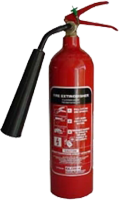
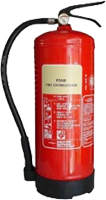
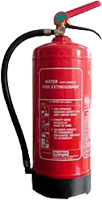
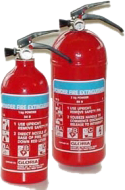
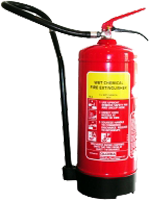
CHEMICAL
Fire Extinguishers Information
Fire Extinguisher Annual Maintenance
Fire extinguishers do not have an indefinite life, even if they are never actually used. Their contents can lose pressure, the inside of the canisters are prone to rust and corrosion if liquid contents, and the canister seams can be weakened by continual high pressurization.
Seals can deteriorate, valves can stick, and fire extinguisher can become knocked and dented simply by being part of a building’s fixtures and fittings.
Fire extinguisher maintenance and care in accordance with the Code of Practice stipulated in British Standard 5306 part 3 should be integrated into your premises Fire Risk Assessment and is, in effect, a legal requirement of the Regulatory Reform (Fire Safety) Order 2005.
Annual inspections (or more frequent for high risk locations or corrosive environments)
by a competent person will involve inspecting every fire extinguisher, and identifying
those extinguishers which need re-
The manufacturers instructions will tell you what you need to do to keep your extinguisher in good working order. After an extinguisher has been used, even if only partially, it must be recharged according to the manufacturers instructions.
The extinguisher should be serviced annually.
Check Your Business Fire Extinguishers Every Month
A visual check on your fire extinguishers once a month takes very little time, but can save both money and lives and is part of your legal duty.
1. Check that your fire extinguishers are on their proper fire extinguisher floor stands or wall hanging brackets, and access to them is unobstructed. Check that all fire extinguisher stands are undamaged, and that all wall brackets are secure. Check that signage is also unobstructed, so staff can easily see where fire extinguishers are located in the event of an emergency. Replace any worn, peeling or damaged signage.
2. Check the pressure gauge where fitted. The gauge needle should be in the green
zone. If it is in the red, either have the fire extinguisher re-
3. Check that all seals are intact, that the safety pin is in place and secured by
a tamper-
4. Check the fire extinguisher cylinder for any signs of leakage, rust spots or dents. If you find any, replace the fire extinguisher immediately and safely dispose of the old one. If a fire extinguisher is badly damaged, do NOT move it yourself in case the canister explodes. Call in a professional fire extinguisher company who will remove it safely.
5. Check that the labelling remains clear and sharp to read. Some guides recommend you gently shake small powder extinguishers to prevent the contents from settling into a cake. In practice, you need to hold the unit upside down next to your ear without shaking so you can hear the loose powder gradually fall. Do not try this with large extinguishers.
6. Finally, take a moment to look around the space to see if anything has changed that will affect either the operation, provision or location of your fire extinguishers. Is a new filing cabinet obscuring a sign, or has a new machine been installed in the area requiring access to a CO2 fire extinguisher?
Types of Fire Extinguishers
WATER FIRE EXTINGUISHERS are especially designed for tackling Class A fires (wood, paper, straw, textiles, coal etc.).
FOAM FIRE EXTINGUISHERS are ideally suited where both class A & B fire risks exist. Aqueous Film Forming Foam or AFFF is particularly suited to fight liquid spill fires such as petrol, oil, fats, paints etc. and works by forming a film on the liquid to extinguish the fire. This extinguisher has also passed the electrical conductivity test at 35kv.
CARBON DIOXIDE FIRE EXTINGUISHERS are suitable for class B risks involving flammable liquids and especially for electrical hazards. These extinguishers have been a natural replacement for Halon. CO2 is harmless to electrical equipment and as such is ideal for modern offices, electronic risks, and fires caused by the combustion of liquids such as: oils, fats, solvents, etc.
POWDER FIRE EXTINGUISHERS are especially suited to mixed fire risk environments and a good all round extinguisher. They are also suitable for flammable liquid risk, such as methane, propane, hydrogen, natural gas etc.
WET CHEMICAL FIRE EXTINGUISHERS are especially designed for tackling cooking oil / deep fat fryer (Class F) fires, but also have an effective capability for extinguishing Class A fires (wood, paper, straw, textiles, coal etc.). This extinguisher has also passed the electrical conductivity test at 35kv.
Where your fire extinguisher should be positioned.
Fix an extinguisher where you can reach it quickly. The best place is on an escape route, that is near an outside door, or on the route from the living areas to an outside door, or adjacent to a specific risk. It should be properly fixed to the wall at a height where it can be reached. Keep it out of the reach of children.
Fire extinguishers should be fixed where they can be easily seen. Fixing them inside cupboards or behind doors will only waste valuable time if a fire breaks out. Do not place them over cookers or heaters or in places of extreme temperatures.
Things to consider before purchasing a Fire Extinguisher.
There are many very good reasons why you should obtain your Fire Extinguishers from a qualified installer. Many of these are highlighted in an article on the FIA’s (Fire Industry Association) Website. You can read the full article by clicking here. Fire and Electrical Solutions provide a full Fire Extinguisher supply, installation and servicing and we will be happy to answer any questions about your Fire Extinguisher requirements.





